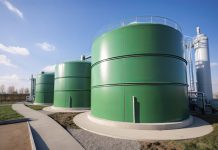India presently imports around 80 percent of its crude oil requirement and around 50 percent of its natural gas requirements. As the domestic production of crude oil and natural gas are virtually stagnant and the domestic demand is increasing at around 7 percent per annum, India’s steadily increasing dependence on import of the vital energy source is a matter of high energy security concern. This is particularly so, since the price of crude oil and natural gas are considerably fluctuating/increasing in the global market due to geo political factors, which are beyond the control of India. India has promised to achieve zero emission by the year 2070, which mean that the level of emission has to start declining at slow and steady rate from now onwards.
It is now well recognized that global emission is caused largely due to use of coal as fuel and natural gas as fuel and feedstock. While burning of coal as fuel cause emission of global warming carbon dioxide gas and sulphur dioxide gas, the storage and transportation of natural gas cause methane emission. India has to simultaneously tackle energy security issue and also has to reduce the emission level at the same time. Is this possible in the present circumstances? Are the strategies being adopted to tackle these two issues contradictory?
Limitation of the Strategies
The strategies for India to reduce emission and import dependence on crude oil consist of blending ethanol with petrol, promotion of electric vehicles, increase in renewable energy generation as well as promotion of hydrogen as fuel and feedstock.
In the case of renewable energy, a total of 144 GW capacity excluding hydro power has been installed as of June 2022. Besides, renewable energy projects of 60.66 GW capacity are under various stage of implementation and 23.14 GW capacity are under bidding. While the progress is laudable, the fact is that the impact of renewable energy project in reducing crude oil import dependence would not be significant, since renewable energy generation is seasonal and climate dependent and the capacity utilization of renewable energy project is only at around 20 percent.
In the case of electric vehicle, Government of India aims at ensuring that 30 percent of all new vehicles are electric by 2030. While good progress is being made and electric vehicles can reduce emission, it should not be nullified by using electric power for charging batteries if the power were to be generated by burning coal, which is a fossil fuel generating emission. There is no way that the power requirement of electric vehicle would be completely provided by renewable energy in the foreseeable future.
Government of India has fixed 20 percent target to blend ethanol with petrol by 2025 and good progress are being made to boost ethanol production. However, this would make short supply of ethanol for other industrial purposes, as ethanol is an important feedstock for chemical industry. Further, it is estimated that 20 percent ethanol blending with petrol would result in 70 million tons of greenhouse gas emission , due to physical transportation of 1,016 crore litre of ethanol per year by trucks using petroleum fuel.
In the case of hydrogen energy, renewable hydrogen industry is still in development stage across the world. Impressive progress is being made in utilising hydrogen abroad like hydrogen fuel-based railway project costing ₹737 crore implemented in Germany. However, as of now, such hydrogen used is not green hydrogen. In India too, hydrogen fuel cell vehicle plants have been announced including one at Chennai. However, these projects would use blue hydrogen or grey hydrogen and not green hydrogen produced using renewable energy. Obviously, the above strategies which are progressive, would be totally insufficient to reduce India’s import dependence of crude oil and natural gas to any significant level in the foreseeable future.
Dependence on Coal
While government of India is implementing the above strategies, it is also increasing the production of coal, which is a fossil fuel. To increase the production of coal to around 1000 million ton per annum from the present level of 700 million ton per annum, the government of India has now auctioned 10 coal mines for commercial exploitation. Obviously, boosting coal production and greater use of coal as fuel to reduce import dependence on crude oil, will cause emissions and obviously, this would nullify the emission reduction strategies of Government of India. This appears to be a contradictory policy.
Need for New Strategies
In the recent months, when global crude oil price has steeply increased, government of India somehow managed the situation by buying crude oil from Russia at discounted price. However, this strategy can essentially be a short-term measure. In such circumstances, apart from the strategies adopted already, India has to think about more imaginative solutions which could be the following.
Promotion of algae crop and algae biofuel for which the requirements such as tropical conditions, availability of waste land, requirement of sunshine and carbon dioxide, etc. in India provide an ideal situation for promoting algae crop/biofuel.
India imports around 2.2 million ton of methanol per annum, as India does not have competitively priced natural gas which is the feedstock for methanol production. Commercial plants are operating abroad for production of methanol from municipal solid waste. India should have no hesitation in exploiting this methanol investment opportunity from municipal solid waste.
From methanol, dimethyl ether can be produced, which is an eco-friendly fuel that can replace petroleum-based LPG in a big way. Further, it is necessary to boost domestic production of ethanol to meet increasing percentage of ethanol blending with petrol. For this, ethanol production from beet sugar should also be promoted in India in a big way as ethanol from beet sugar has even more advantages than ethanol from sugarcane as it is less water consuming.































